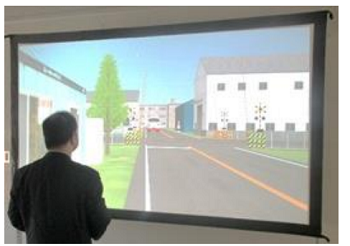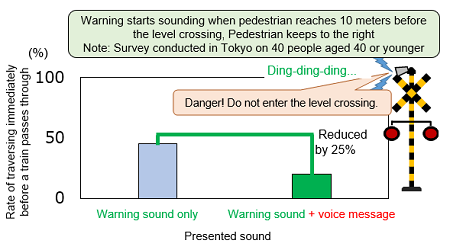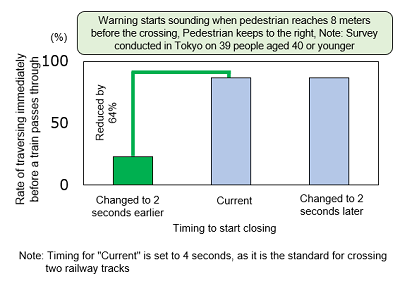3. Prevention of pedestrian entry while a level crossing warning is sounding by means of a voice message and changing the timing of crossing gate closing
A survey of 2,435 pedestrians using level crossings was conducted with the aim of reducing level crossing accidents and the result showed that 61% of those who experienced fallen barrier traps by entering the crossing while the warning was sounding had misunderstood the meaning of the warning to be "Caution" instead of its intended meaning "No entry."
Therefore, adding a voice message to promote a clear understanding of the intended meaning of the level crossing warning and starting to descend the crossing rods earlier without changing the time to complete their descending were proposed as measures to prevent pedestrians from entering the level crossing while the warning was sounding.
A voice message, which is expected to be effective in communicating the dangerous situation and instruct pedestrians not to enter the level crossing, was selected from several options with different message contents and speaking speeds in advance, and an experiment to simulate pedestrians traversing a level crossing was conducted to verify its effectiveness (Fig. 1).
It was confirmed that the number of pedestrians who entered the crossing while the warning was sounding was reduced by 25% compared to the current rate (Fig. 2).
It was also confirmed that by starting to close the level crossing rods earlier, which visually communicated "No entry," the number of pedestrians who entered the level crossing during the warning was sounding was reduced by 64% compared to the current rate (Fig. 3).
Thus, it can be expected that the number of level crossing accidents can be reduced by reducing the number of pedestrians who enter the level crossing while the warning is sounding with these methods of presenting visual and auditory information.



